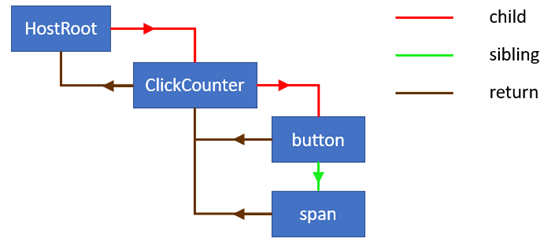Current and work in progress trees
current 指向当前的 fiber 树 React 在开始更新的时候,会构建一颗 workInProgress 树。对于已经存在的 Fiber Node,React 会创建一个 alternate node(替身)放到 workInProgress 树上。
当更新完成后,workInProgress 就变成了 current。
React 有一个原则就是一致性,更新 DOM 的操作永远是一次性的。 workInProgress 可以理解为是一份对用户不可见的“草稿”。
每个 alternate node 都会保存一份对 current 树上自己对应的节点的引用,反之亦然。

https://indepth.dev/inside-fiber-in-depth-overview-of-the-new-reconciliation-algorithm-in-react/
对于这种 React.Element 节点,会在 render 阶段被合并成一个 Fiber 节点。
对于不同类型的节点,React 做的事情不同:
所以需要做不同的标记
Fiber 是一个最小的工作单元,并且它的结构便于跟踪、调度、中断和恢复。
这里 可以看到 Fiber 的创建过程。
Fiber 结构图: